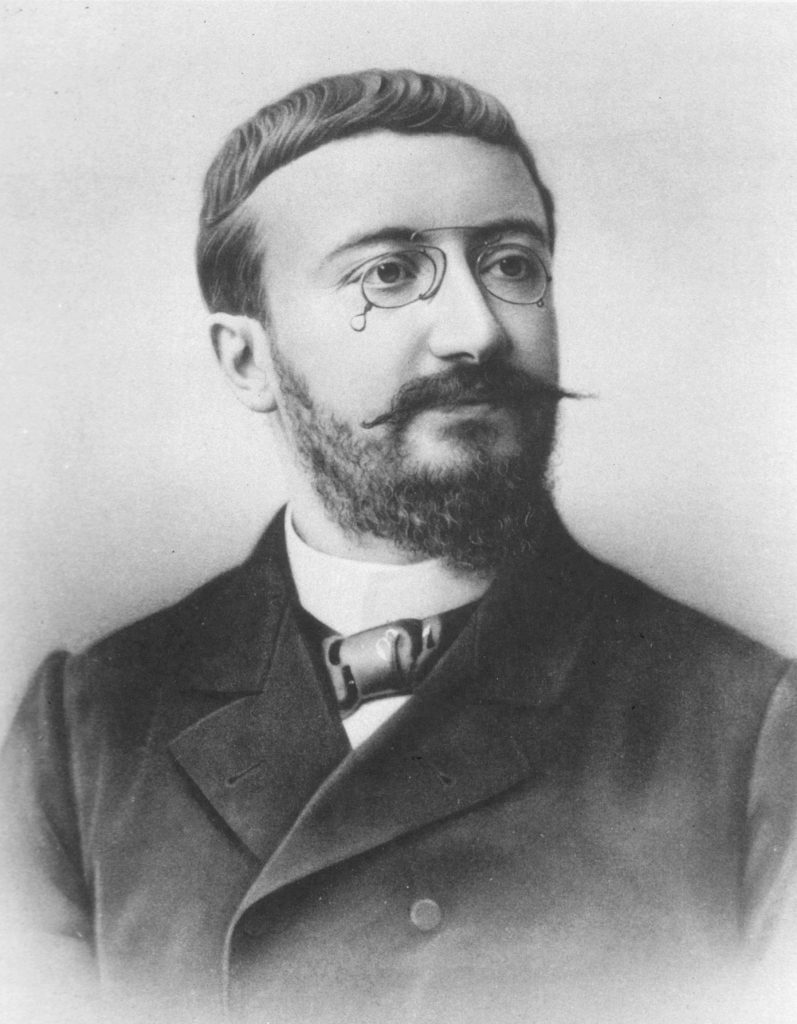77 Theories of Intelligence
Martha Lally; Suzanne Valentine-French; and Dinesh Ramoo
Psychologists have long debated how to best conceptualize and measure intelligence (Sternberg, 2003). These questions include how many types of intelligence there are, the role of nature versus nurture in intelligence, how intelligence is represented in the brain, and the meaning of group differences in intelligence.
General (g) versus specific (s) intelligences: From 1904 to 1905 the French psychologist Alfred Binet (1857–1914) and his colleague Théodore Simon (1872–1961) began working on behalf of the French government to develop a measure that would identify children who would not be successful with the regular school curriculum. The goal was to help teachers better educate these students (Aiken, 1994). Binet and Simon developed what most psychologists today regard as the first intelligence test, which consisted of a wide variety of questions that included the ability to name objects, define words, draw pictures, complete sentences, compare items, and construct sentences.

Binet and Simon (Binet, Simon, and Town, 1915; Siegler, 1992) believed that the questions they asked the children all assessed the basic abilities to understand, reason, and make judgments. It turned out that the correlations among these different types of measures were in fact all positive; that is, students who got one item correct were more likely to also get other items correct, even though the questions themselves were very different.
On the basis of these results, the psychologist Charles Spearman (1863–1945) hypothesized that there must be a single underlying construct that all of these items measure. He called the construct that the different abilities and skills measured on intelligence tests have in common the general intelligence factor (g). Virtually all psychologists now believe that there is a generalized intelligence factor (g) that relates to abstract thinking and that includes the abilities to acquire knowledge, reason abstractly, adapt to novel situations, and benefit from instruction and experience (Gottfredson, 1997; Sternberg, 2003). People with higher general intelligence learn faster.

Soon after Binet and Simon introduced their test, the American psychologist Lewis Terman at Stanford University (1877–1956) developed an American version of Binet’s test that became known as the Stanford-Binet Intelligence Test. The Stanford-Binet is a measure of general intelligence made up of a wide variety of tasks including vocabulary, memory for pictures, naming of familiar objects, repeating sentences, and following commands.
Although there is general agreement among psychologists that “g” exists, there is also evidence for specific intelligence (s), a measure of specific skills in narrow domains. One empirical result in support of the idea of “s” comes from intelligence tests themselves. Although the different types of questions do correlate with each other, some items correlate more highly with each other than do other items; they form clusters or clumps of intelligences.
Triarchic theory: One advocate of the idea of multiple intelligences is the psychologist Robert Sternberg. Sternberg has proposed a triarchic (three-part) theory of intelligence that proposes that people may display more or less analytical intelligence, creative intelligence, and practical intelligence. Sternberg (1985, 2003) argued that traditional intelligence tests assess analytical intelligence, academic problem solving and performing calculations, but that they do not typically assess creative intelligence, the ability to adapt to new situations and create new ideas, and/or practical intelligence, the ability to demonstrate common sense and street smarts.

As Sternberg proposed, research has found that creativity is not highly correlated with analytical intelligence (Furnham and Bachtiar, 2008) and exceptionally creative scientists, artists, mathematicians, and engineers do not score higher on intelligence than do their less creative peers (Simonton, 2000). Furthermore, the brain areas that are associated with convergent thinking, thinking that is directed toward finding the correct answer to a given problem, are different from those associated with divergent thinking, the ability to generate many different ideas or solutions to a single problem (Tarasova, Volf, and Razoumnikova, 2010). On the other hand, being creative often takes some of the basic abilities measured by “g,” including the abilities to learn from experience, remember information, and think abstractly (Bink and Marsh, 2000). Ericsson (1998), Weisberg (2006), Hennessey and Amabile (2010) and Simonton (1992) studied creative people and identified at least five components that are likely to be important for creativity, as listed in Table 5.3.
| Component | Description |
|---|---|
| Expertise | Creative people have studied and learned about a topic |
| Imaginative thinking | Creative people view problems in new and different ways |
| Risk-taking | Creative people take on new but potentially risky approaches |
| Intrinsic interest | Creative people take on projects for interest, not money |
| Working in creative environments | The most creative people are supported, aided, and challenged by other people working on similar projects |
The last aspect of the triarchic model, practical intelligence, refers primarily to intelligence that cannot be gained from books or formal learning. Practical intelligence represents a type of street smarts or common sense that is learned from life experiences. Although a number of tests have been devised to measure practical intelligence (Sternberg, Wagner, and Okagaki, 1993; Wagner and Sternberg, 1985), research has not found much evidence that practical intelligence is distinct from “g” or that it is predictive of success at any particular tasks (Gottfredson, 2003). Practical intelligence may include, at least in part, certain abilities that help people perform well at specific jobs, and these abilities may not always be highly correlated with general intelligence (Sternberg et al.,1993).
Theory of multiple intelligences: Another champion of the idea of specific types of intelligences rather than one overall intelligence is the psychologist Howard Gardner (1983, 1999). Gardner argued that it would be evolutionarily functional for different people to have different talents and skills, and proposed that there are eight intelligences that can be differentiated from one another. A potential ninth intelligence that is existential still needs empirical support. Gardner investigated intelligences by focusing on children who were talented in one or more areas and adults who suffered from strokes that compromised some capacities, but not others. Gardner also noted that some evidence for multiple intelligences comes from the abilities of autistic savants, people who score low on intelligence tests overall but who nevertheless may have exceptional skills in a given domain, such as math, music, art, or in being able to recite statistics in a given sport (Treffert and Wallace, 2004). In addition to brain damage and the existence of savants, Gardner identified these eight intelligences based on other criteria, including a set developmental history and psychometric findings. See Table 5.4 for a list of Gardner’s eight specific intelligences.
| Intelligence | Description |
|---|---|
| Linguistic | The ability to speak and write well |
| Logical-mathematical | The ability to use logic and mathematical skills to solve problems |
| Spatial | The ability to think and reason about objects in three dimensions |
| Musical | The ability to perform and enjoy music |
| Kinesthetic (body) | The ability to move the body in sports, dance, or other physical activities |
| Interpersonal | The ability to understand and interact effectively with others |
| Intrapersonal | The ability to have insight into the self |
| Naturalistic | The ability to recognize, identify, and understand animals, plants, and other living things |

The idea of multiple intelligences has been influential in the field of education, and teachers have used these ideas to try to teach differently to different students. For instance, to teach math problems to students who have particularly good kinesthetic intelligence, a teacher might encourage the students to move their bodies or hands according to the numbers. On the other hand, some have argued that these intelligences sometimes seem more like abilities or talents rather than real intelligence. There is no clear conclusion about how many intelligences there are. Are sense of humour, artistic skills, dramatic skills, and so forth also separate intelligences? Furthermore, and again demonstrating the underlying power of a single intelligence, the many different intelligences are in fact correlated and thus represent, in part, “g” (Brody, 2003).
Media Attributions
- Figure 5.8: Alfred Binet. is licensed under a Public Domain license
- Figure 5.9: Have you taken an intelligence test? © Wadi Lissa is licensed under a Public Domain license
- Figure 5.10: How many uses for a paper clip can you think of? © sunshinecity is licensed under a CC BY (Attribution) license
- Figure 5.11: Although intelligence is often conceptualized in a general way (as the “g” factor), there is a variety of specific skills that can be useful for particular tasks. © Knight Foundation is licensed under a CC BY-SA (Attribution ShareAlike) license

